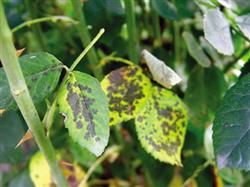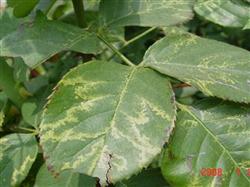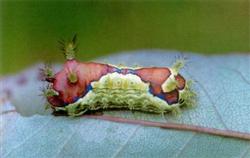Control of mole cricket of Chinese rose

Morphological features: the adult has a long 4.5cm, black or dark brown body, dense fine hairs, dark red spots in the center of the forechest dorsal plate, stout forefeet, digging feet, long tail whiskers behind the abdomen, wings often stacked on the back of the body, oval eggs, yellowish white when first produced, and then gradually yellowish brown, newly hatched nymphs milky white, yellowish brown after 2 instar, usually occurs one generation every three years, overwintering with adults or nymphs in the ground. The adults have phototaxis and acoustics and begin to move from March to April. The damage is serious from April to May. Adults mate and lay eggs in June and hatch nymphs in July. Mole cricket is one of the underground pests, mainly gnawing on the rhizome, often coaxing into a tunnel under the soil layer, making the plant root strip dehydrated and withered to death. Prevention and control methods: (1) using black light to trap and kill adults. (2) in order to avoid providing living environment for mole cricket, organic fertilizer must be fully ripened before it can be used; (3) 40% omethoate 1000 times liquid should be poured on the affected plant. (4) 50 grams of trichlorfon with 90% crystal. Add stir-fried bait to mix well, add water to mix into a suitable dry and wet poison bait, sprinkle around the root of the plant or in the basin. All can play a good prevention and control effect.
- Prev

Prevention and treatment of rose mosaic disease
Rose mosaic disease is widely distributed, which can cause the decline of the yield and quality of cut rose flowers. Symptoms: the symptoms vary from rose to rose. Rose mosaic virus is characterized by small green spots, sometimes showing polygonal patterns. The leaf surface around the lesion is often more or less deformed. Some of the symptoms are circular.
- Next

Formation characteristics and control of Plutella xylostella
Morphological features: the adult is orange-yellow, with filamentous brown diagonal antennae, converging at one point on the wing tip. It is inverted v-shaped, the hind wings are grayish yellow, the feet are brown, the eggs are flat and oval, yellowish. The larva is slightly rectangular, the front end is slightly larger, the body color is bright, the body back moth has a large purple spot, and the head is dark brown. The cocoon is oval. 12m...
Related
- Fuxing push coffee new agricultural production and marketing class: lack of small-scale processing plants
- Jujube rice field leisure farm deep ploughing Yilan for five years to create a space for organic food and play
- Nongyu Farm-A trial of organic papaya for brave women with advanced technology
- Four points for attention in the prevention and control of diseases and insect pests of edible fungi
- How to add nutrient solution to Edible Fungi
- Is there any good way to control edible fungus mites?
- Open Inoculation Technology of Edible Fungi
- Is there any clever way to use fertilizer for edible fungus in winter?
- What agents are used to kill the pathogens of edible fungi in the mushroom shed?
- Rapid drying of Edible Fungi

